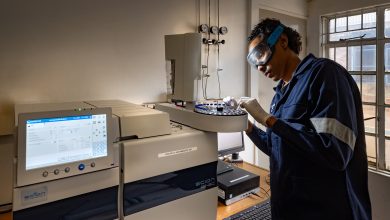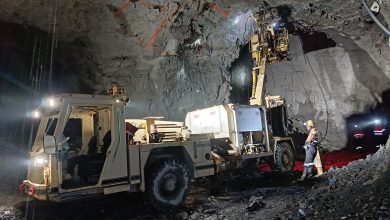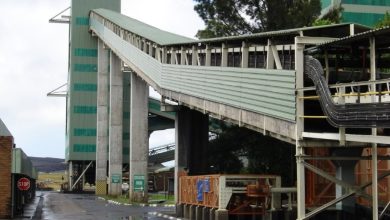
Critical Minerals
Harnessing the Potential of Critical Minerals in Southern Africa: A catalyst for Sustainable growth
“Southern Africa offers fertile ground for industries that intersect with mining. There is a strong case for investment in beneficiation facilities, battery manufacturing, and recycling plants.”
By Bruce Dickinson
As the world accelerates towards green energy and technological advancements, Southern Africa stands at the epicentre with its wealth of critical minerals. The region’s reserves of platinum, chromium, lithium, and rare earth elements position it as a key player in the global supply chain. However, there’s an opportunity here that goes beyond extraction – mining in Southern Africa can catalyse economic transformation, bringing sustainable benefits to communities and regional economies long after the mines are closed.
The regional landscape: Abundance and opportunities
Southern Africa’s mineral wealth is well-known, with the Southern African Development Community (SADC) controlling 90% of the world’s platinum reserves and 80% of its chromium deposits, among other vital resources. Key regional projects showcase the landscape’s strength and potential including:
- With over USD 1 billion in recent investments, Zimbabwe is quickly becoming a global lithium hub.
- The Zambia-DRC Battery Metals Corridor is a promising initiative enhancing the regional supply chain for battery metals.
- Efforts to revitalise South Africa’s platinum industry are well underway.
Projects like the Lobito Corridor, a vital transportation link, are also strategically enhancing trade and co-investment in infrastructure and related industries. These developments illustrate Southern Africa’s readiness for broader investment across upstream, midstream, and downstream sectors.
Investment opportunities beyond mining
Southern Africa offers fertile ground for industries that intersect with mining. There is a strong case for investment in beneficiation facilities, battery manufacturing, and recycling plants. Additionally, integrated planning can reveal co-investment opportunities in sectors like infrastructure, agriculture, energy, and manufacturing, establishing a diversified economic base and creating employment in communities impacted by mining.
Mining companies don’t need to shoulder these investment initiatives alone. By inviting investment in shared infrastructure, such as transportation networks, ports, and energy facilities, other industries can piggyback off mining, fostering a sustainable, interlinked economy.
The Impact of the African Continental Free Trade Area (AfCFTA)
AfCFTA, the world’s largest free trade area, promises to reshape intra-African trade by creating a market of over 1.3 billion people. For Southern Africa’s mining sector, this presents a wealth of opportunities. By eliminating trade barriers and harmonising trade policies, AfCFTA will expand market access and attract investors. Additionally, the agreement offers opportunities to develop supply chains within the continent, particularly for emerging sectors like battery and technology. This strategic move will not only boost economic growth but also diversify the region’s economic landscape.
Strengthening policies for a sustainable future
Government policies are critical to ensuring that mining and related industries contribute to sustainable development. Southern African countries are progressing in aligning their policies, with efforts in state participation, local content mandates, and environmental protection.
There’s room, however, for further enhancement. Streamlining licensing and permitting processes would attract investor confidence and expedite project timelines. Establishing competitive fiscal regimes and striking a balance between royalty rates and incentives would attract investment while ensuring fair compensation for resources. Furthermore, fostering public-private partnerships (PPPs) can mobilise resources for critical infrastructure and energy projects, creating a foundation for long-term economic resilience.
Prioritising ESG and community-centric approaches
Sustainable mining practices are essential for minimising environmental impact and building positive community relationships. Key areas include:
- Environmental stewardship: Mining operations can incorporate renewable energy sources, emissions reduction technologies, and effective waste management systems.
- Community engagement: Transparent benefit-sharing agreements, local employment targets, and skills development programmes can ensure that the benefits of mining extend to local communities.
- Long-term impact: By fostering economic diversification programmes and infrastructure that serves local needs, mining companies can leave a legacy that persists beyond the mine’s operational life.
Looking ahead: A holistic approach to regional growth
With a thoughtful, collaborative approach, mining in Southern Africa can be a powerful lever for regional development. By embracing initiatives like AfCFTA and building out value chains in industries like battery manufacturing, Southern Africa can capture more of the value within the region, creating resilient economies that support communities and industries for generations.
Southern Africa’s critical minerals are not just a resource to be extracted—they are the foundation for sustainable growth, economic resilience, and a prosperous future for the region and its people. Through collective commitment and investment, we can unlock the region’s full potential, ensuring that Southern Africa’s mineral wealth is a catalyst for inclusive, sustainable development across the continent.
Bruce Dickinson is a Partner at Webber Wentzel






